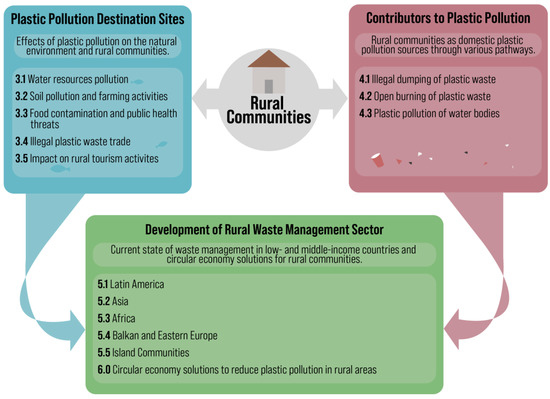Reclaim Waste Fundamentals Explained
Reclaim Waste Fundamentals Explained
Blog Article
About Reclaim Waste
Table of Contents10 Easy Facts About Reclaim Waste DescribedSome Ideas on Reclaim Waste You Need To KnowThe Greatest Guide To Reclaim WasteRumored Buzz on Reclaim WasteThe Best Strategy To Use For Reclaim WasteWhat Does Reclaim Waste Mean?
Via proper fluid waste administration, companies can reduce energy-intensive treatment procedures and disposal prices. They likewise get to conserve sources and allocate them in other relevant processes. There are various policies that protect public health and wellness and the setting. By following a system for handling fluid waste, business can avoid pricey fines and penalties and prevent negative promotion.Remain in advance of guidelines and keep a risk-free office with a digitized compliance tool. Categorizing liquid waste is crucial for reliable storage space, therapy, and disposal. Environmental, Wellness, and Security (EHS) teams, waste management policemans, and compliance managers can deal with these wastes safely and successfully when they comprehend the basics: Generated from homes, this type of liquid waste comes from toilets, sinks, showers, and washing equipments.
(https://pagespeed.web.dev/analysis/https-reclaimwaste-com-au-services/qskv0cxsge?form_factor=mobile)Accumulate depictive samples from different points within the waste stream to make sure precision. Conduct regular testing to track any adjustments in the make-up. Preserve thorough documents of characterization for future referral and compliance objectives. Fluid waste, specifically hazardous ones, poses substantial risks during this action. Correct treatments decrease spills, leaks, and various other crashes that might harm the workers and the general public.
Reclaim Waste - The Facts
Segregate the waste based on its kind (e.g., unsafe or non-hazardous) to make sure proper handling. Store waste in safe and secure and watertight containers to stop spills throughout collection. Tag the containers appropriately, including the kind of waste, potential dangers, and dealing with instructions. Load the protected containers into transportation automobiles with vacuum cleaner trucks or mobile tanks.
is required when the effluent will certainly be reused or discharged right into metropolitan pools. Sanitation (e.g., chlorination, ultraviolet light, ozonation) and nutrient removal (e.g., denitrification and phosphorus eradication) are suggested under strict laws. This stage in the procedure is strictly controlled since it is when most threats happen. Countless business breached a number of fluid garbage disposal guidelines in the last few years.
After selecting the best type of treatment approach for fluid waste, business need to locate methods to throw away this effectively. Below are some effective methods of liquid waste monitoring: get most treated fluid waste that satisfies discharge requirements. describes making use of treated wastewater in agricultural lands for irrigation as long as the effluent satisfies sanitary levels per policies.
7 Simple Techniques For Reclaim Waste
Shallow basins have liquid waste that is allowed to vaporize with natural processes. This type of disposal is subject to rigorous environmental laws due to potentially hazardous exhausts.
The findings must be documented, analyzed, and saved not simply for entry to governing authorities but additionally for making renovations in the future. Share info with relevant stakeholders (e.g., workers, regulative federal government firms, and close-by communities) to maintain openness and responsibility.
The Basic Principles Of Reclaim Waste
No matter of the firm size or sector, there are numerous challenges linked with this job. Business that can not invest in centers must take into consideration collaborating with the public sector for far better remedies (industrial wastewater treatment).
Liquid waste describes any kind of material in a fluid state that is excess, undesirable, or disposed of. One significant obstacle for business is the lack of proper storage centers for fluid waste. Partnering with liquid waste services will greatly reduce this difficulty Requirement skip containers and various other containers that are commonly made use of for solid waste are commonly inadequate for the unique requirements of taking care of liquid products.
The Ultimate Guide To Reclaim Waste
This blog explores the characteristics of liquid waste, reviewing exactly how spills and contamination events can be managed successfully. It also explores the actions business can take to avoid future leaks and what to do when spills unavoidably occur. Liquid waste consists of any type of unwanted or surplus product that exists in a liquid type and is established for disposal.
This sort of waste occurs when a product is no much longer required, just like any other kind of trash. At times, this implies merely additional reading tossing it away, which can occur as an outcome of producing more than necessary. Nevertheless responsible monitoring with correctly getting rid of is a must. It is important to involve trained liquid waste monitoring experts when delivering or disposing of liquid waste.

Some Known Factual Statements About Reclaim Waste
The Epa states the "material should go through a 0.45-micron filter at a stress differential of 75 psi" in order to be defined as a liquid. What is necessary to keep in mind here is that the extra strong an item is, the much less likely it is to be liquid. It's feasible to differentiate in between two sorts of fluid waste: organic and not natural. Both have their differences.
Both businesses and people can dramatically benefit from recognizing appropriate trash disposal processes with 9 ideal techniques in waste administration. These methods are straightened with the recognized waste pecking order.

Report this page